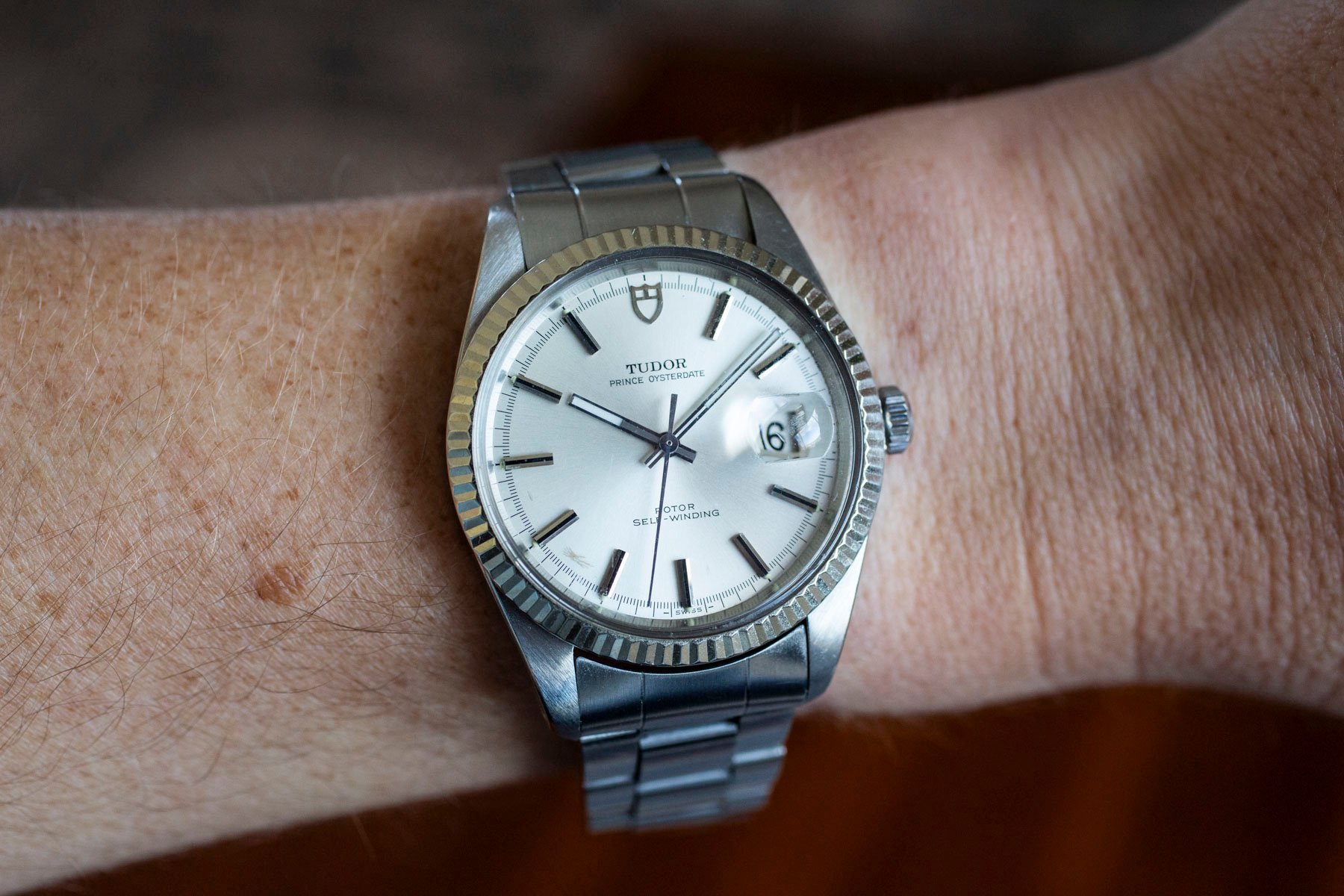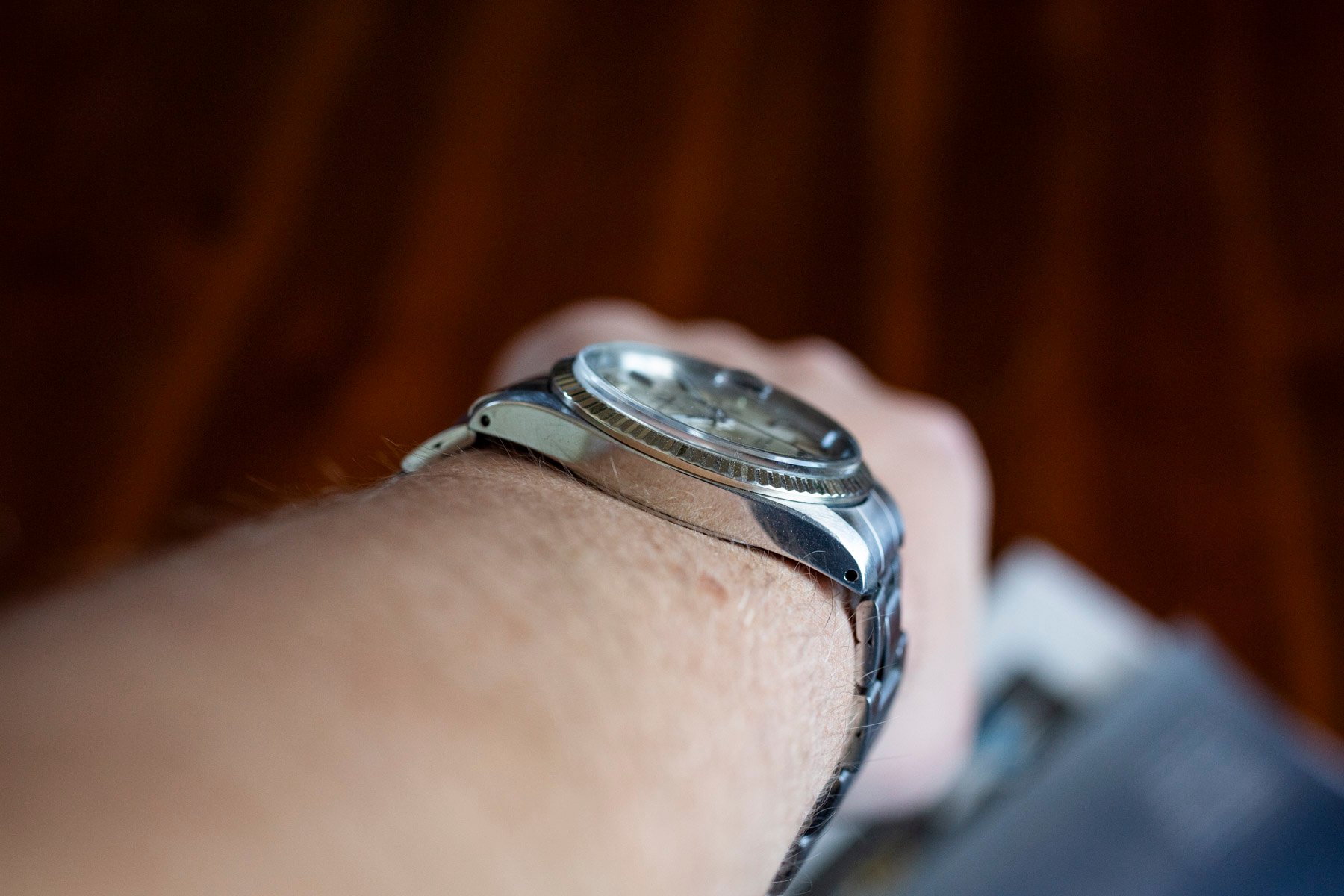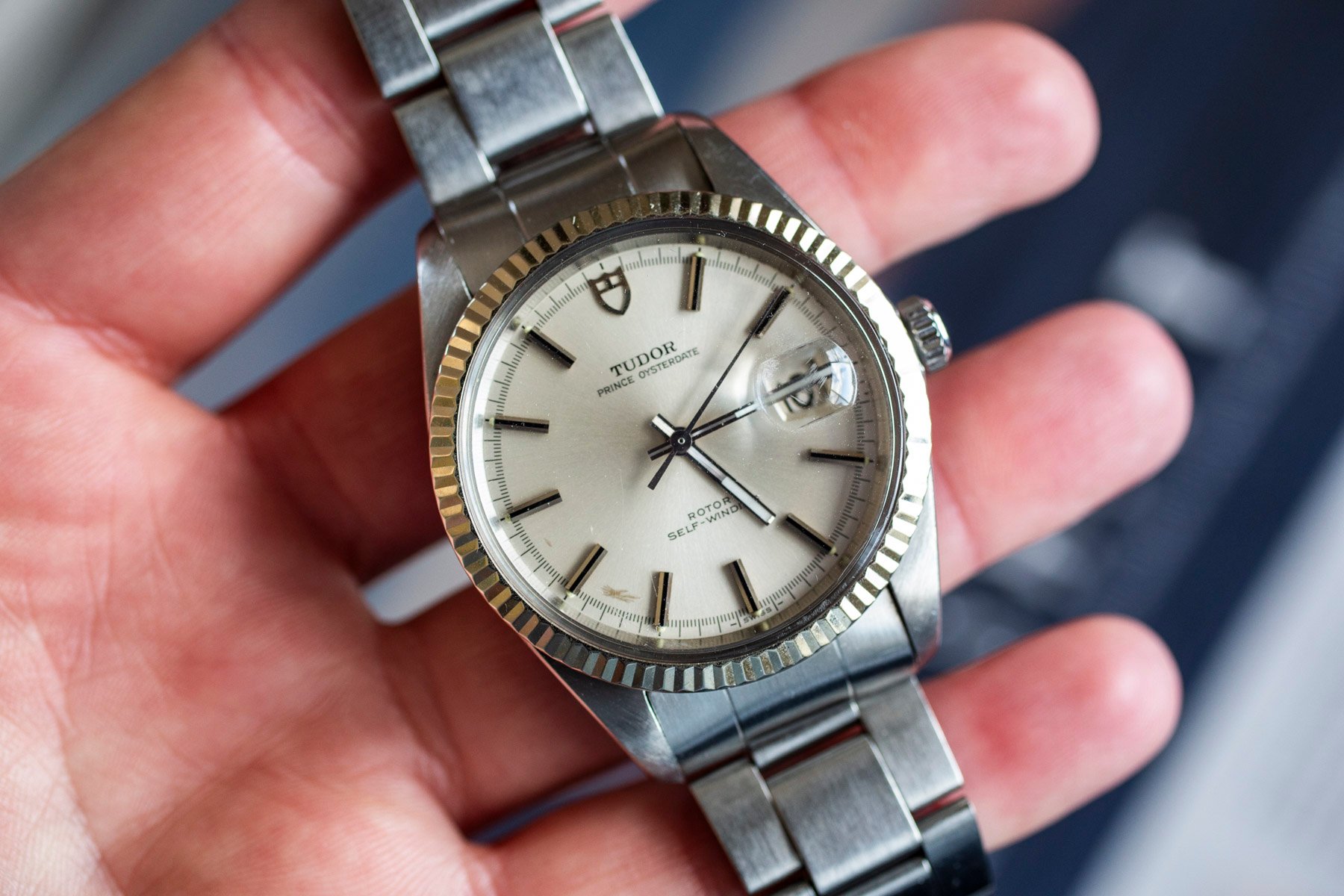The Tudor Prince Oysterdate “Jumbo” Is A Vintage Value Proposition
I am a big fan of vintage Tudor, as many of you will probably already know. Tudor, to me, is a brand that represents the very best of Hans Wilsdorf’s vision of creating mechanical excellence but without the posh baggage of Rolex. The vintage Tudor Prince Oysterdate “Jumbo” will scratch the Datejust itch but with a wonderful and modern case size.
Some out there will poo-poo vintage Tudor in the same way they discount modern Tudor — as the “poor man’s Rolex”. Frankly, the fact that this continues even today doesn’t bother me one bit. It actually means we have sleeper vintage bargains like the watch we will look at today. That watch is the Tudor Prince Oysterdate “Jumbo” with a 38mm case.
A family connection
For many, including me, the 36mm Rolex Datejust is an absolute classic in watch design. My colleague Thomas has written an excellent feature about the ref. 1601, which you can read here. You will find many of the same design cues from the ref. 1601 in the Tudor Prince Oysterdate Jumbo. But there are also some significant differences worth noting, so without further ado, let’s dive in.
The Tudor Prince Oysterdate Jumbo: a Goldilocks size
For many, a 37–40mm case size is just right. Part of the reason the Black Bay 58 is so popular is the 39mm case, which many consider ergonomically superior to its larger 41mm big brother. For those of us after the smaller wearing experience, there is also the 37mm Tudor Black Bay 54. But a 38mm case fills a unique role in that it’s neither too large nor too small.
I would argue that a 38mm Prince Oysterdate Jumbo is a perfectly sized watch. It measures approximately 11mm thick and sits beautifully on 5.5–8″ wrists. The stick hands and applied indices are the same timeless and classic design found on many Rolex Oyster Perpetual watches too. This makes for that winning Rolex/Tudor formula of sporty-dressy.
In a nice touch, a large Tudor shield (instead of the Rolex crown) sits at 12 o’clock. Just like the Datejust, we also get a date complication underneath a Cyclops magnifier. A fluted bezel completes the picture, creating a lovely knurled look and playing with light in an enchanting way.
The Prince Oysterdate Jumbo also has a 20mm lug spacing. This is fantastic for modern wearers because it means we have practically unlimited strap options. I’d argue that the silver-dial Prince Oysterdate Jumbo would look particularly handsome on a gray NATO strap, for example. The other wonderful element of these watches is that they come with drilled lug holes. These make changing straps super easy.
A fantastic bracelet
For those who like to stick with bracelets, the Oyster will be familiar. The bracelets of this era (1960s–1980s) were predominantly made by Rolex, though, as time wore on, Tudor watches began to come with Tudor-branded and slightly inferior metal bracelets. I’m not sure if this carried over to the 38mm Jumbos or not (readers, you can let me know in the comments). But what I do know is that this particular example comes with a Rolex bracelet featuring the brand’s crown on the exterior of the clasp and “Rolex” on the folding arms.
Speaking of this particular example, you may ask where I found it. Well, it’s not mine but, rather, my father’s. He’s an admirer of vintage tool watches, and this is from his small collection. He’s worn it in the ocean after getting it pressure-tested and serviced, and it has functioned flawlessly in adverse conditions.
Some variety out there
The Tudor Prince Oysterdate Jumbos of this era came with either fluted or non-fluted bezels. There were also 38mm Tudor Oyster Prince Date-Day models styled after the Rolex “President.” The watches have the iconic “Rotor Self-Winding” text indicating the use of automatic calibers. These were third-party movements from the likes of ETA. As you can see on my father’s watch, the crowns had Rolex branding, and so did the cases.
The calibers were of high quality and renowned for keeping good time straight out of the factory. They featured Tudor-branded rotors and were, at the very least, regulated in-house. Some even consider them equally as reliable and robust as Rolex calibers of the time.
Tudor Oyster Jumbos on the secondary market
So, finally, we get to the nitty-gritty. How much can you expect to pay for one of these larger Tudor Oyster siblings? The prices, frankly, seem to vary greatly based on condition and specific design features. Prices also rose with the onset of the COVID pandemic, but have now settled down. You can expect to pay anywhere between €2,000 and €5,000 for a Tudor Prince Oysterdate Jumbo or Oyster Prince Date-Day on Chrono24.
However, I would advise you to pay particular attention to signs of water damage with these watches. It seems that people who used to buy them often liked to take them swimming without getting the seals checked! Always do your due diligence when purchasing a vintage watch, and see if the seller can provide documents about its service history. Thankfully, because many of these watches utilized relatively common third-party movements, servicing should not be prohibitive.
Final thoughts
I love Tudor Oysters of this era. I own a 34mm one, which I have written about for Fratello here. I’m also the proud and happy owner of a 34mm Rolex Oyster Perpetual ref. 1002.
The Oyster case is iconic in watch design. We are in the fortunate position as passionate hobbyists and collectors that there are so many options out there. For those of you after a little of the vintage Rolex magic on a budget, I can’t recommend these vintage Tudor Oysters enough. But what do you think, Fratelli? Would you go for one of these? Let me know your recommendations for vintage watches in the comments.












